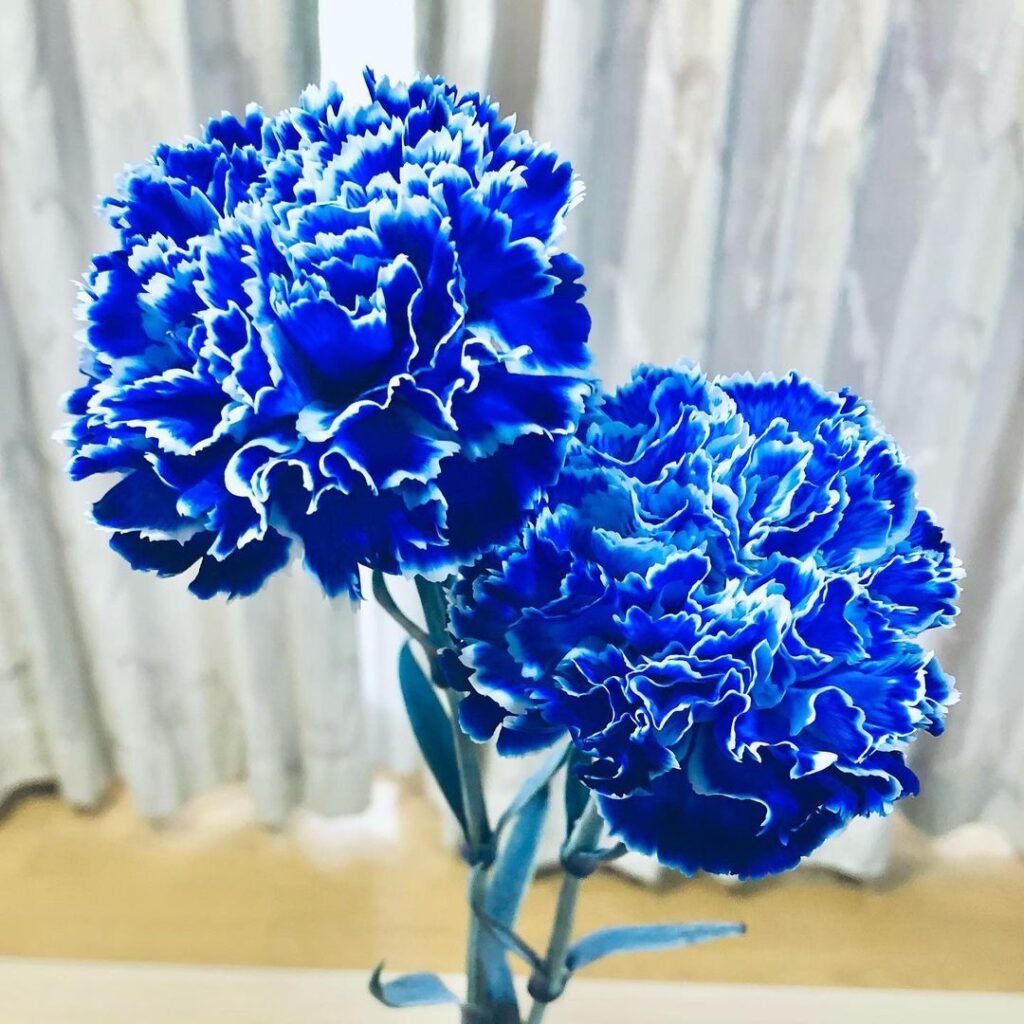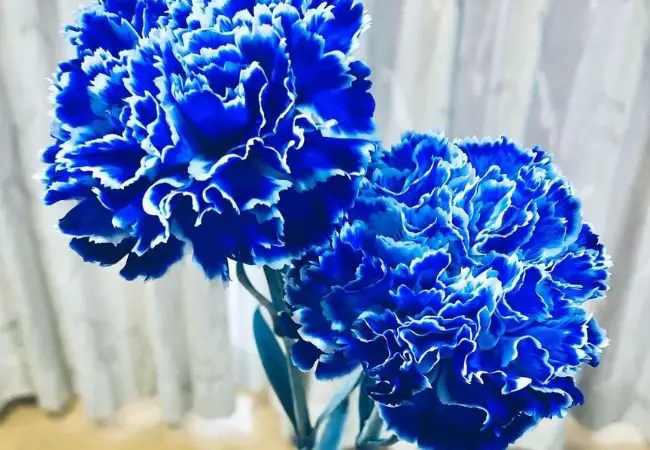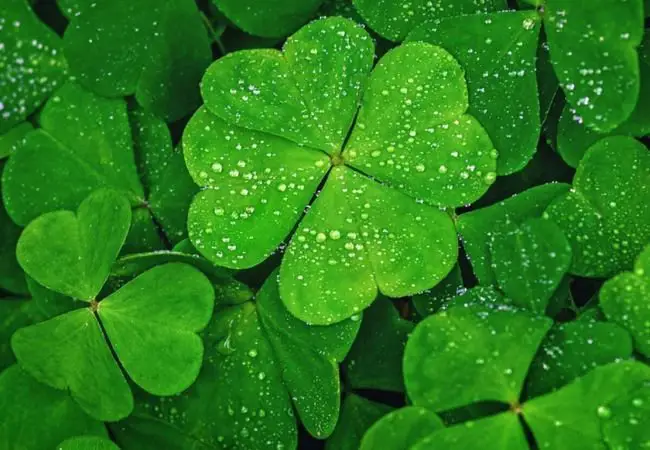Discover the secrets of growing and caring for Blue Carnation flowers. Learn about their origins, symbolism and cultivation techniques in this comprehensive guide.
Blue Carnation are not naturally occurring flowers but are created through dyeing techniques. While true blue carnations don’t exist in nature, white carnations can be tinted blue using food coloring or floral dyes. These flowers symbolize peace and tranquility and are often used in special occasions and floral arrangements.
Introduction to Blue Carnations

As a floriculturist with over two decades of experience in rare and unique flower varieties, I’m excited to share my knowledge about blue carnations. These fascinating flowers have captured the imagination of gardeners and flower enthusiasts worldwide.
The Truth About Blue Carnations
It’s important to understand that blue carnations do not occur naturally. The blue color is achieved through human intervention, typically by dyeing white carnations. This process has led to some misconceptions about these flowers.
For more information on flower pigmentation, visit the American Society of Plant Biologists’ education portal.
Origins and Symbolism
Historical Background
Carnations have been cultivated for over 2,000 years, with their origins traced back to the Mediterranean region. However, blue varieties are a modern creation.
Symbolism and Meaning
Blue carnations are often associated with:
- Peace and tranquility
- Faithfulness and loyalty
- Uniqueness and rarity
For more on flower symbolism, check out the University of Illinois Extension’s guide to the language of flowers.
Growing Blue Carnations
Planting and Care
While you can’t grow naturally blue carnations, you can grow white carnations and dye them blue. Here’s how to cultivate carnations:
Soil Requirements
- Well-draining, slightly alkaline soil (pH 6.7-6.9)
- Rich in organic matter
Sunlight Needs
- Full sun to partial shade (6-8 hours of direct sunlight daily)
Watering
- Keep soil consistently moist but not waterlogged
- Water at the base to avoid wetting foliage
Fertilizing
- Use a balanced, water-soluble fertilizer every 2-3 weeks during growing season
For more detailed carnation care instructions, visit the Royal Horticultural Society’s carnation growing guide.
Creating Blue Carnations
To create blue carnations:
- Start with white carnations
- Mix floral dye or food coloring with water
- Cut stem at an angle and place in the colored water
- Wait 24-48 hours for the flower to absorb the dye
Pest and Disease Management
Common issues include:
- Fusarium wilt
- Carnation rust
- Aphids and spider mites
For pest and disease control information, check out Penn State Extension’s guide on carnation diseases.
Using Blue Carnations in Floral Arrangements
Blue carnations are popular in:
- Wedding bouquets
- Special occasion centerpieces
- Unique gift arrangements
For floral design tips, visit the American Institute of Floral Designers’ resources page.
Ethical Considerations and Alternatives
Some gardeners prefer natural flower colors. Alternatives to dyed blue carnations include:
- Blue delphiniums
- Blue hydrangeas
- Blue irises
For information on naturally blue flowers, visit the University of Vermont Extension’s guide to blue flowers.
While true blue carnations don’t exist in nature, the process of creating them has led to stunning floral displays and sparked interesting discussions about flower breeding and genetic modification. Whether you choose to grow white carnations and dye them blue or opt for naturally blue flowers, the addition of these cool-toned blooms can bring a unique touch to any garden or floral arrangement.
For more information on carnation cultivation and breeding, visit the American Carnation Society’s website.
For more gardening tips and plant care guides, visit usagardenhub.com.






